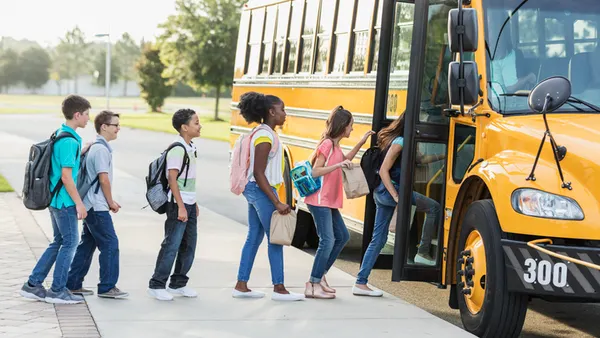Dive Brief:
- A new report, "State K-12 Broadband Leadership: Driving Conductivity and Access," released by the State Educational Technology Directors Association and the organization Common Sense Kids Action highlights how state policymakers and district officials can work together towards increasing Internet accessibility and affordability in schools.
- Some 30 states already have guidelines and recommendations for broadband connectivity in place, with 28 already having a high-speed statewide broadband network, the report says.
- According to another report from the FCC released in 2016, 41% of U.S. schools still haven't met the FCC's goal of 100 Mbps per 1,000 students/staff.
Dive Insight:
Across the U.S, school systems have been
slow to gain speed when it comes to Broadband connectivity. Even though E-rate funding ballooned from just $3.9 billlion last year to a projected $5.8 billion in 2016, American schools have a long way to go before meeting connectivity goals like those set forth by the FCC. Just 9% of districts currently meet the FCC’s 2018 goal, which is to double the current 100 kbps rate. The
Federal Communications Commission is considering repurposing a $2 billion phone subsidy program, Lifeline, to include subsidies for broadband services in low-income homes.
According to EducationSuperHighway's “2015 State of the States” report, 77% of school districts already have Internet speeds of roughly 100 kbps per student, meeting the FCC’s definition of a speed “sufficient” for digital learning.
Still, 21 million American K-12 students still lack adequate Internet access. Overall, most schools report that the largest barrier to better connectivity is cost. In remote locales, satellite internet can be a viable option, since it doesn't require any kind of terrestrial infrastructure.
In
Georgia, a
statewide effort to expand high-speed web access in schools resulted in a public-private partnership, Connections for Classrooms, which donated $8.2 million in grant money to 47 Georgia school districts for the implementation of high speed broadband access in order to strengthen blended learning in the state.




 Dive Awards
Dive Awards







